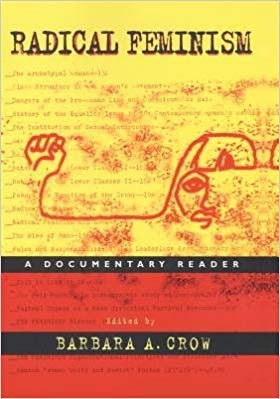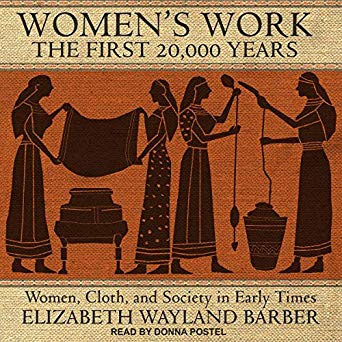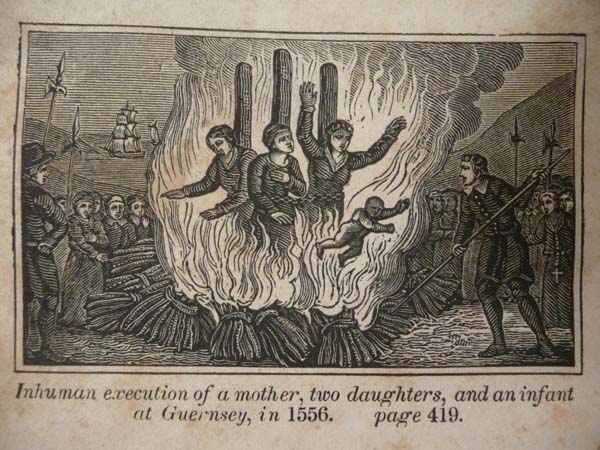Teaching Early Twenty First Century “Women’s and Gender Studies” in an Elite Southeastern American University
By Batya Weinbaum
About Batya: Batya is founder and director of Feminina Sube, a feminist art installation on Isla Mujeres, in MX (fmi see https://www.gofundme.com/femininasube-islam) and Handmaids Gate, a feminist retreat center in Floyd VA. She also initiated and runs women’s campsites on the Floyd land through HipCamp, and tentrr, so check out https://theoutbound.com/lodging/shaushkah-s-delight. She founded and edits the journal Femspec, which will be running a series on essentialism for the next three issues. FMI see http://femspec.org/
Please note: This article is a shorter version of an article that will appear in an anthology about bullying in academe, edited by Jennifer Martin and Jane Beese. This version has been edited by XX Amazons.

Batya Weinbaum with her soulmate Wally.
bul·ly:
1. seek to harm, intimidate, or coerce (someone perceived as vulnerable).
2. New? (norm of relationship of supervisor to adjunct in academe)
ac·a·dem·ic free·dom:
1. a scholar’s freedom to express ideas without risk of official interference or professional disadvantage.
Academic freedom is the conviction that the freedom of inquiry by faculty members is essential to the mission of the academy as well as the principles of academia, and that scholars should have freedom to teach or communicate ideas or facts without being targeted for repression, job loss, or imprisonment. — Wikipedia
“Academic freedom establishes a faculty member’s right to remain true to his or her pedagogical philosophy and intellectual commitments,” and it “preserves the intellectual integrity of our educational system and thus serves the public good” allowing us to operate “without fear of censorship or retaliation” and most importantly, without fear of sanction (Cary Nelson, “Defining Academic Freedom” Inside Higher Ed December 21, 2010)
How It Began…
In September of 2018 when suddenly asked to teach two courses in WGS, I had been teaching literature, writing, cultural studies, and peace studies online for 11 years, and exclusively online for nine, always doing whatever I could in a range of institutions to slip some feminism in. Some of these institutions were military, some of them were for-profit, some community, some public and state. The syllabi I was teaching had been largely written by others I seldom met or knew, poured into a metaphorical transom of higher education and taught by random others dispersed around the country or the globe.
Hence, understandably, holding a doctorate with all the individualized struggle to achieve a particular set of skills and specialization which that entails, I was truly excited to be invited to teach two courses at a university in what I thought was going to be a bastion of feminism, a community of colleagues, and like-minded individuals, a program of Women’s and Gender Studies (WGS). One course was to be an advanced seminar, “Women, Gender and Labor: Cross Cultural Representations,” taught in the classroom and the other an online introduction to WGS.
Most importantly for me, I would be writing my own syllabi, at last defining what and how I would be teaching. Or, at least I thought I would be. Ahh, ignorance is bliss. And as recently as October of 2018, when I said yes to face-to-face teaching again, I was blissfully ignorant of what had happened to WGS.
Most importantly for me, I would be writing my own syllabi, at last defining what and how I would be teaching. Or, at least I thought I would be. Ahh, ignorance is bliss. And as recently as October of 2018, when I said yes to face-to-face teaching again, I was blissfully ignorant of what had happened to WGS. I only wish I could return to my memories and live in what feminism was, way back when.
How It Was…
It used to be, back when I taught face-to-face on campus almost a decade ago, that when given a teaching assignment–the instructor, teaching associate, teaching assistant professor, assistant professor–to name a few of the various slots I have been in–would be given a general name for the course. The course might be listed in the catalogue as American Literature, Women in Literature, Fiction and Drama, or something else very broad – and then the teaching faculty, no matter what the designation, would be responsible for filling the rest in.
 That meant, according to the concept of academic freedom, the person hired in would be treated like a duly trained professional, hired with a specialized expertise and bringing a particular set of skills to the workplace. Drawing on knowledge developed over a lifetime, a person would select materials and books, and send the list to the bookstore, or submit the list to the department secretary, who would simply order them with everyone concerned respecting the new kind of knowledge being brought in. That was the first burst of creative effort, involving, usually, expansion of the mind. This would involve walking around one’s house for days perhaps, pulling books off shelves, remembering fascinating discussions at conferences, opening up filing cabinets, searching for new takes online. Then one would whittle down the vibrating mass of ideas, sensations, articles, authors and memories to the discrete number of weeks, days, and sections, in which all the material could be covered. And covered well. One would go through the process, once, and again–waking up at night, rethinking, reorganizing, going through it all once again, thinking of what could be cut, what must go back in, imagining classrooms and conversations, situations in offices, the fascinating paper possibilities and assignment options.
That meant, according to the concept of academic freedom, the person hired in would be treated like a duly trained professional, hired with a specialized expertise and bringing a particular set of skills to the workplace. Drawing on knowledge developed over a lifetime, a person would select materials and books, and send the list to the bookstore, or submit the list to the department secretary, who would simply order them with everyone concerned respecting the new kind of knowledge being brought in. That was the first burst of creative effort, involving, usually, expansion of the mind. This would involve walking around one’s house for days perhaps, pulling books off shelves, remembering fascinating discussions at conferences, opening up filing cabinets, searching for new takes online. Then one would whittle down the vibrating mass of ideas, sensations, articles, authors and memories to the discrete number of weeks, days, and sections, in which all the material could be covered. And covered well. One would go through the process, once, and again–waking up at night, rethinking, reorganizing, going through it all once again, thinking of what could be cut, what must go back in, imagining classrooms and conversations, situations in offices, the fascinating paper possibilities and assignment options.  Once the decisions had all been made, one could go swimming, take a break. Look at oneself in the mirror again. And then come back in again for the second creative process, again to be buried in the cave. A slave, truly, to the enticement of fifteen weeks of delivering the excitement of one’s truest intellectual passions.
Once the decisions had all been made, one could go swimming, take a break. Look at oneself in the mirror again. And then come back in again for the second creative process, again to be buried in the cave. A slave, truly, to the enticement of fifteen weeks of delivering the excitement of one’s truest intellectual passions.
The second stage is where you start writing down the game plan, called the syllabus. You think of an interesting opening, a title, how you want to present yourself, grabbing the interest of the student, explain the method of teaching. This is where you use your skills, knowledge and expertise to design the kind of room you want to inhabit for the next several weeks. What kind of student do you want to hook, capture, inspire, enrapture, and teach: what kind of minds and souls do you want to influence and reach, and to what end? What is the goal? What kind of graphic would pull your ideal type in? What kind of caption did you need to write, to capture the right kind of imagination? You close your eyes and imagine, what is the precise kind of viewer you want to behold? You squint. You imagine your first caption.
Then, next, having envisioned the new cohort you would entrap, you start mapping out how you will dance. You have already established what rooms of the mind you will lead them around in. But what kind of exercises will you create, in order to enhance learning?
Then you send in the syllabus. It gets copied. You pick it up. You take it to class. You get the seats in a circle. You pass it out. And the magic begins. You have set up this experience. You have done your part. And then, you start the learning. Slowly the class unravels. They take the lead. You begin dancing on high heels backwards, like Ginger Rogers. They tell you what interests them. You make suggestions. You fill up their need. Your room becomes filled with the next generation of Fred Astairs.
Unless…
While teaching Intro to Women and Gender Studies online, with great success, in this new institution, and with much positive student interaction, I was in March of 2019 summarily removed from my face-to-face course which was listed in the university system as a Women’s Studies Seminar. My specific form of the seminar was “Women, Gender and Labor: Cross Cultural Representations.” The course title had been listed from before as Women and Labor, the specific title from some professor probably now on leave that I must have been standing in for, and the title the students had signed up for had never been changed to the one I was actually teaching. Blow to the magic number one. But there was more.
As far as I can tell, due process at the university was violated by a top-down authoritarian decision made by the Director of WGS by taking her complaint about my teaching to the chair of the department which housed the program. I was given no written warning, as required in the Faculty Handbook.
As far as I can tell, due process at the university was violated by a top-down authoritarian decision made by the Director of WGS by taking her complaint about my teaching to the chair of the department which housed the program. I was given no written warning, as required in the Faculty Handbook, for termination for, say, professional incompetence. To remove a faculty from a teaching position, even instructional faculty on contract, as I was, a chair must write a letter with a statement saying what must be changed within a month’s time, and this goes to the faculty person as well as to the dean. Nor was I given an opportunity to present my case to anyone, let alone peers. And just who would that be? To date, a list of instructional faculty around campus has never been gathered for me.
In my case, I got an email from the Director of WGS telling me that the department chair had asked her to set up a meeting, on a Monday in March. I walked in at 1:30 to be told simply that while I could keep the money, there was to be no conversation, the decision was made already, I was not to return to the classroom, and the Director would be contacting all the students in that seminar. Period. The implication was that I was to have no more contact with the students.
There it is. Down in black and white. Well, I had been working in a hostile environment. Perhaps it was best to bring the unpleasant situation to an end.
Early Rumblings…
 The hostility began, from my point of view, in Oct, when to my surprise I was rudely informed that my book lists for the spring semester were due sometime that month. Dutifully I went through the process described above, although I was working for two other institutions at the time and had not yet fit this one into my dance card. Yet, having immediately accommodated the request, without any guidelines, the book lists I had submitted for both courses had been rejected. I ended up finding all the readings online, except one book, in one course, and one copy of a journal, in another, that I sold to the students myself. The Director had said, I see you decided not to use an anthology, for Intro, when I had…the anthology I had chosen was Radical Feminism: A Documentary Reader. When I pointed that out, she said I could not assign the book unless three-quarters of the book was to be read; but my assignments had been structured around allowing students to choose their own selections to discuss from each of the various sections. I find this an effective pedagogical tool, whether online or in class, but I was not allowed to use it. Then she told me that students could only be assigned 30 pp a week in intro, 60 in the seminar…info that would have been handy to know before I developed the booklist.
The hostility began, from my point of view, in Oct, when to my surprise I was rudely informed that my book lists for the spring semester were due sometime that month. Dutifully I went through the process described above, although I was working for two other institutions at the time and had not yet fit this one into my dance card. Yet, having immediately accommodated the request, without any guidelines, the book lists I had submitted for both courses had been rejected. I ended up finding all the readings online, except one book, in one course, and one copy of a journal, in another, that I sold to the students myself. The Director had said, I see you decided not to use an anthology, for Intro, when I had…the anthology I had chosen was Radical Feminism: A Documentary Reader. When I pointed that out, she said I could not assign the book unless three-quarters of the book was to be read; but my assignments had been structured around allowing students to choose their own selections to discuss from each of the various sections. I find this an effective pedagogical tool, whether online or in class, but I was not allowed to use it. Then she told me that students could only be assigned 30 pp a week in intro, 60 in the seminar…info that would have been handy to know before I developed the booklist.
Then, there were all the syllabus revisions, that went on, and on, and on. No, I couldn’t use this kind of assessment. No, I couldn’t assign this kind of reading. No, I couldn’t assign this kind of activity. No, I couldn’t word things one way. I had to fully explain everything on the syllabus to the last detail, blow by blow, and I had to require reading notes be turned in, and a host of graded homework assignments… ad infinitum. I think by the third time around, she suddenly decided to inform me that I had to gear the seminar around the writing of a research paper of a specific length, to be presented at a student conference, three months into a class that lasted longer than that. Would it have been handy to have been forewarned? Of course.
Have you ever known a teaching situation like this? Teaching with a backseat driver, or with somebody taking the steering wheel while you are driving? And then tossing you from the car?
Even though the contract said teaching assignment, and designated nothing about course design, and redesign, the notion of the Director was that she had access to my time to request (demand) constant course redesign, even while the course was in motion, after Jan 23. Have you ever known a teaching situation like this? Teaching with a backseat driver, or with somebody taking the steering wheel while you are driving? And then tossing you from the car? Read on.
Once the course began…
Throughout the teaching, the Director would send me emails, and tell me what to stress in the classroom sessions. I was not to tell stories from my life experience and to be sure to use only formal language and diction in class. She sent me further emails, bringing up how “students say you are making them feel stupid,” and suggested I support their ideas, rather than teach from what I know. As far as week eight into the course, she dressed me down, for not respecting students’ choice of pronouns, although no student had designated a pronoun to me that I had chosen to ignore. Their very first assignment had been to turn in on a notecard something of significance they wanted me to know about themselves. Had anyone chosen to tell me about pronoun choice? No. She said students complained I had too many assignments due in too short of a period, were worried that I would not give them feedback and grade them fast enough. She demanded I send my assignments to her for inspection. She complained that I had the students address issues of methodology, and literature review, in their papers, which she had only done in graduate school.
Using the Tools of the Master for What—Are We Dismantling Each Other, Education or the Master’s House?
At one point I drew a line and told the Director there is a limit to how many times I can revise this course. Still upset with my course design, she conjured up the hierarchy to use against me, saying she would take my syllabus to the WGS committee, and see whether they supported her. I was given no opportunity to present my case, to explain either my pedagogy and choice of materials and style of learning and teaching to them, or to explain how many unpaid hours I had already been working. My feeling was that if they wanted a paper added on, they could write and drop in that section themselves and I would be happy to teach their institutional design for them, as I did at countless other places. What I was not willing to do at this point was more unpaid work myself. She came back with the verdict that I had to use critical, respected, legitimate sources, and have the students write rigorous papers.
I asked if she expected me to change the readings, and if she had not seen that the students were already expected to use critical sources. I told her there was much feminist writing about material culture, ethnography and anthropology and that is what they would be drawing on in one of the class exercises, which was to pick an object from the real world which best represents women, gender and work, and write an exposition of why you think it does, drawing on all the critical texts and readings we have been doing in the class, and supporting your choice with further research. The object could have been a birthing chair, a poster from a demo, a photograph of a statue or a war memorial, a tool from a kitchen like a mixer or a spatula, a hard hat, a menstrual sponge, an advertisement for childcare, a mommy blog…any object utilized in or impacting women’s lives.
She said there might be much writing about material culture, but this is a seminar in Women and Gender Studies, so that writing about objects representing women or in women’s lives is not relevant. (1) At the time, I was shocked. I thought I had done my best and started to explain…. but I just stopped, incredulous that I even had to be doing this.
Really? Writing by feminist scholars about material and folk culture in their own disciplines in the study of women is not relevant in Women and Gender Studies? Then what is, actually?
LBGTQ+ and Essentialism Collide in Class
 Student complaints stemmed from the class session when I was teaching Monica Sjoo and Barbara Mor’s, The Great Cosmic Mother. One student said the authors were essentialist. She wasn’t comfortable defining women around reproduction. She thought of herself as a woman, but not because she could reproduce. She didn’t want to have a baby. I said I didn’t either at her age and suggested that she wait a few years…but that that wasn’t the point. The point was, that women had been defined by the societies they lived in based on reproduction for 35,000 years. And that in the times Mor and Sjoo were writing about, this generative nature was a power, and that even at their age, I had been able to contemplate these different theories of how the world had begun. I told them that as we go through the course, we will see that as patriarchy emerged, this flipped, and motherhood—the female power to generate–became instead a function to dis-empower women, causing theorists we would study later like Shulamith Firestone to repudiate the power of motherhood completely.
Student complaints stemmed from the class session when I was teaching Monica Sjoo and Barbara Mor’s, The Great Cosmic Mother. One student said the authors were essentialist. She wasn’t comfortable defining women around reproduction. She thought of herself as a woman, but not because she could reproduce. She didn’t want to have a baby. I said I didn’t either at her age and suggested that she wait a few years…but that that wasn’t the point. The point was, that women had been defined by the societies they lived in based on reproduction for 35,000 years. And that in the times Mor and Sjoo were writing about, this generative nature was a power, and that even at their age, I had been able to contemplate these different theories of how the world had begun. I told them that as we go through the course, we will see that as patriarchy emerged, this flipped, and motherhood—the female power to generate–became instead a function to dis-empower women, causing theorists we would study later like Shulamith Firestone to repudiate the power of motherhood completely.
The point was, that women had been defined by the societies they lived in based on reproduction for 35,000 years. And that in the times Mor and Sjoo were writing about, this generative nature was a power.
Underlying the dynamic, of course, was the ideology of the transgender movement coming through the LGBTQ+ group on campus that a few of these students were in, that women are not defined by the ability to reproduce, because that excludes transwomen…it all comes down to the phrase, that one of them used to me in my office just before the break, a woman doesn’t have to have a vagina. Which is insulting as it is. Defining a woman by whether she has a vagina is defining a woman by whether or not she has a hole that a guy can stick something in, when a vagina is an entry way into what is crucial, an entire reproductive female system INSIDE of us that has a magical power of its own connecting to the mysteries of the universe.
Many in academia today consider any feminist focus on biological differences between the sexes to be “essentialist.” As I explained in a subsequent session, essentialism really began with Plato and Aristotle and was therefore actually part of a patriarchal philosophic tradition. The term “essentialism” only started being used against some feminists when feminists began to enter the university and then have conversations with people in the academy in their disciplines in order to earn tenure, rather than conversations with others in the women’s liberation movement in order to increase feminist consciousness and end patriarchy. As the shift away from feminist revolution towards feminist institutionalization occurred, in other words. Then labeling some feminist ways of thought that were more deeply challenging than others as essentialist began to be a way of othering radical feminists, as too radical, to keep them out. As an example, I said, you have never heard of Sjoo and Mor, right? And you wouldn’t have if I wasn’t here…. the point was clear. (2)
The term “essentialism” only started being used against some feminists when feminists began to enter the university and then have conversations with people in the academy in their disciplines in order to earn tenure, rather than conversations with others in the women’s liberation movement in order to increase feminist consciousness and end patriarchy. As the shift away from feminist revolution towards feminist institutionalization occurred.
Anonymous student complaints to the Helicopter Hit Mom Director began and she, in turn, pressured me via email. Again, I was forced to spend time explaining to her what was going on in the classroom, and then just invited her in to see. From my point of view, educating the Director should not be up to me.
When she did come to observe, she admitted that she did not see what students were complaining about, although administratively, she could not tell me who said what, or be transparent. She claimed all this had to be confidential, because students were afraid of consequences on their grades. I laughed and said it would be the reverse. I would bend over backwards to give them nothing to complain about, if I knew who the complainers were, instead.
But when complaints went on, as I continued giving the students a radical feminist education in the class, I tired of wasted energy dealing with micromanagement. I no longer wanted to take the time to reassure the overbearing, overmentoring director who was interfering with my academic freedom that the students had nothing to complain about….especially as what was happening in class that led to these complaints were things like this:
Students were doing assignments called “footnotes,” in-depth explanations of what comes up in class. We read, and discuss, and when something interests a student enough to do some research they bring back a “footnote”—like a footnote would be, in a scholarly book. I teach them what scholarly discourse is as well, to boot.
But instead, this process was used to disrupt by those at odds with the approach of the course.
For example, a student brought in a book, Gender Outlaw, which is by two M to Fs, and had nothing to do with the class. I said no. One of the other students, who I believe to be one of the complainers, popped up immediately in my face and chimed in, oh that book would be fine, there are plenty of ways to spin that… I said I would take it home to consider because I had not read the collection.
So here was the interaction: a disruptive student called the shots, dismissing the professor’s opinion, and the performance was done in front of the whole class. Others politely cleared their topics with me one by one in email. I wasn’t quick enough to catch the dynamic in the moment.
I did come back and say I would allow the book, feeling intimidated. So the footnote happened. Lots of handouts about all the work that men must do to present as female were presented. A student read a quote about all the pain the cross-dressing transwomen go through: “Forget activism…” because it is so much work to do….I picked up on that. “’Forget activism.’ Really?” I asked, “is the author serious about that? Because that is exactly what a lot of radical feminists are saying. That all this focus on men presenting themselves as stereotypical women—wearing lipstick and dresses, when a lot of women don’t– is indeed taking energy away from the activism of the feminist movement itself, which is trying to change patriarchy.” I told the class about a friend of mine who talks about his presenting as what he thinks is female as cos-play which he sees as a kind of activism, to challenge culture, so I could see that…but other feminists say this focus on presenting within gender-defined roles even if presenting as the “other” gender only reinforces patriarchy. I referred them to a list of sources that suggested the transgender rights movement is in opposition to feminism, including “What is a Woman?” in the New Yorker.
Believe it or not, that is the last full session of the class I taught. I was shocked.
Redefining the Class
At the end of that class session, I announced how the class would be run from now on. I had decided to take my power back, although I didn’t say that, since I had reached my limit of being able to come to work in such a hostile environment: they could make a contract with me to earn a grade they desired; class attendance was no longer required but if they did come, they had to come prepared.
 Two of the 16 came to the next class. One was giving a footnote on women in Ancient Greece, which was the segue between Barber, Women’s Work: The First 20,000 Years, that we had just completed, and Gilman’s Women and Economics, which we were going to begin. We were integrating analysis of how technology was changing everything for women’s work, which used to be structured around where women could work and still be around children….which industrialization had altered considerably and then other technology like the invention of birth control, freezing eggs, and so on, had caused to go off the charts berserk. We were going to, by the end of the semester, personify what Gilman and Firestone would have said about the present. But the Director did not trust and support the pedagogical process in which we were engaged. She flipped out, finding, as she said in a letter she wrote for the grievance, my pedagogy “unimaginable.”
Two of the 16 came to the next class. One was giving a footnote on women in Ancient Greece, which was the segue between Barber, Women’s Work: The First 20,000 Years, that we had just completed, and Gilman’s Women and Economics, which we were going to begin. We were integrating analysis of how technology was changing everything for women’s work, which used to be structured around where women could work and still be around children….which industrialization had altered considerably and then other technology like the invention of birth control, freezing eggs, and so on, had caused to go off the charts berserk. We were going to, by the end of the semester, personify what Gilman and Firestone would have said about the present. But the Director did not trust and support the pedagogical process in which we were engaged. She flipped out, finding, as she said in a letter she wrote for the grievance, my pedagogy “unimaginable.”
The Unforeseen Consequences
After the one night of the small seminar, and after the students who had exercised their rights to control their education had started making appointments with me to do their papers on their own, the Director disrupted the whole process, went to the chair, said I don’t know what, and I was removed from teaching. I said in the meeting with the department Chair that I would have appreciated some trust in the process that we would have arrived at the original goals of the seminar. I would have liked to have seen and heard what creative personification students would have done with Firestone’s take on the current situation, since she thought technology was the solution with test tube babies… would she have approved of use of technology for genital mutilation to change sexes as well? And what would Gilman have had to say? These would have been fantastic, embodied learning experiences of feminist theory, and meanwhile, the other students could have been following the stepped processes to write their papers, but we never got there. The Director, my supervisor, impeded my ability to practice what I had been hired to do, to teach. This was a violation of the contract, so I started a grievance.
I would have liked to have seen and heard what creative personification students would have done with Firestone’s take on the current situation, since she thought technology was the solution with test tube babies… would she have approved of use of technology for genital mutilation to change sexes as well? And what would Gilman have had to say? These would have been fantastic, embodied learning experiences of feminist theory.
At the first meeting with the Director and the Chair, I handed out the table of contents of Female Erasure. I said, quite frankly, that a whole course on this topic would be very beneficial as a special topic. I suggested that what some students might have experienced as my not supporting their ideas (as the Director had said they had said, never saying how many, what ideas, or who) was the overall theoretical, political and intellectual approach that they did not seem to be getting exposure to in WGS. That alternative approach was collected in Female Erasure. Students were hearing things back from me one on one rather than getting an organized point of view. Some students seemed to want my course to reflect what they already were comfortable with and knew.
Yes, the chair said, they have their own culture…
He also said I should have followed the direction I was given.
What narrative the director gave the chair I will never know. When she wrote an email to the students in the seminar (as well as to the students in the online class I was teaching), she referred to much more than she had ever revealed to me. She seemed determined to undermine me. In the online class I was doing very well, the students felt support, could follow my guidelines, and felt free to approach me if they had questions. When pushed, the Director had to admit the online students had not complained to her at all. She claimed in one letter to the Dean justifying the removal that students were disappointed in all regards. Yet, in her email attempting to justify my removal to the students in both my classes, she acknowledged that some had flourished and done well with my mentoring, and benefited from my investment.
When the Chair told me that every version of a course taught had to conform with the way the proposal had been made to the university curriculum committee, I said that made sense, and asked to see it. He declined to spend staff time looking for that document for me. I informed him that I had taken the Director’s direction, and that I was including a paper writing process that was quite rigorous, as she had demanded. I told her the problem was that I was not teaching the course exactly as she would have, so she took it over and got rid of me, mid process. Her real complaint about my teaching was my radical feminist viewpoint, but she falsely accused me of a lack of rigor and failure to include legitimate scholarship. What this says is that there is no toleration of differences in academia anymore, as far as I can see. At least not on this campus, in WGS, where instructors are not entitled to choose instructional materials or methods.
Students can harass instructors out of a job if they do not like what or how instructors are teaching.
WGS students are not learning radical feminism because WGS has eradicated radical feminist teachers.
Institutionalized, post-modern post-feminist WGS does not want radical feminists teaching.
In conclusion:
1. Sometimes, it is better to ask students to grow up rather than to coddle and placate them.
2. Sometimes, educating beyond what the students already know might be good for them.
3. Sometimes, students experiencing discomfort on the way to deeper knowledge gained in the end might be supported in the interest of education.
4. It seems like burying radical feminist thought from current students of WGS might be a disservice to development of feminist consciousness and the feminist revolution.
5. While the view of some of us might be that to develop feminist consciousness is the highest goal, to the directors of programs in institutions, producing future WGS professionals might be a higher priority, even if in the face of changes in higher ed, as well as the economy, actual higher ed jobs in the profession might not even exist.
6. The iceberg is setting in, burying elders, who might have some wisdom to offer, and do not need to be schooled and talked down to, and do not need to be controlled, othered, and separated from contemporary learners. By iceberg, I mean the sheet of ice settling in forming the Ice Age, burying the dinosaurs, which the cold folks in WGS or the younger generation of feminists already call us old radical feminist second wavers anyway.
7. Inclusivity means to the current WGS student including trans, not including a wide range of feminists, or women who might be able to read and use theory outside of the university.
8. The aggressive actions of some pushing the trans line deprives other students of processes that broaden and deepen their education.
9. Codependent young women have been seduced into thinking that other people’s experience (that of the .05 percent of all current women who are transwomen) trumps that of 35,000 years of adult females. Apparently, this is too essentialist for the current handful of LGBTQ+ activists to allow others to think about.
10. It took us 50 years to fight to revisit, reclaim, and reimagine the history of women that had been lost, suppressed, and buried. Now, after 50 years of that reclamation, all of that is slipping back under the iceberg again as gender identity dominance and queer studies are inserted into what once was the women’s studies that the feminist movement created. WGS has become the fossilization of feminism. Instead of preserving feminism, WGS has become the instigator, or the final tool in the fossilization process—that is, until we actually get to Burn the Professor, physically, rather than just harass her.
… witch-burning may not be all that far off…

… witch-burning may not be all that far off…
Footnotes
1. Curiously enough, by April of that spring, although I had already been removed from teaching, and this assignment had been barred. I attended a women and gender studies research seminar dinner in which we all seriously discussed a paper just like this, a discussion of a statue of a woman. This same director who had removed me from the class, and barred this assignment, even provided the food. Was she a witch? A controlling bitch? A sadist? We all gave input into the research on photography of this object of popular culture, exactly as, if the students had been allowed to do my created assignment, the students would.
2. Frieda Werden explains the dynamic like this: “‘Anti-essentialism’ arose as a concept in the early days of Women’s Studies, and was used to exclude biological and gender differences from academic discourse on grounds they were ‘essentialist.’ I suppose this was a kind of triumph of liberal feminism, which was invested in minimizing sex differences in pursuit of workplace equality. In the new millennium, not only Gender Studies (which valorizes gender differences) but also Motherhood Studies and Modern Matriarchal Studies have grown up in defiance of that line. If you go back into ‘first wave’ feminism, you find similar splits, of course. Feminism is a movement, not a dogma; it is full of diversity and contradictions. It seems to me that you are right to try to teach that” (personal communication).
